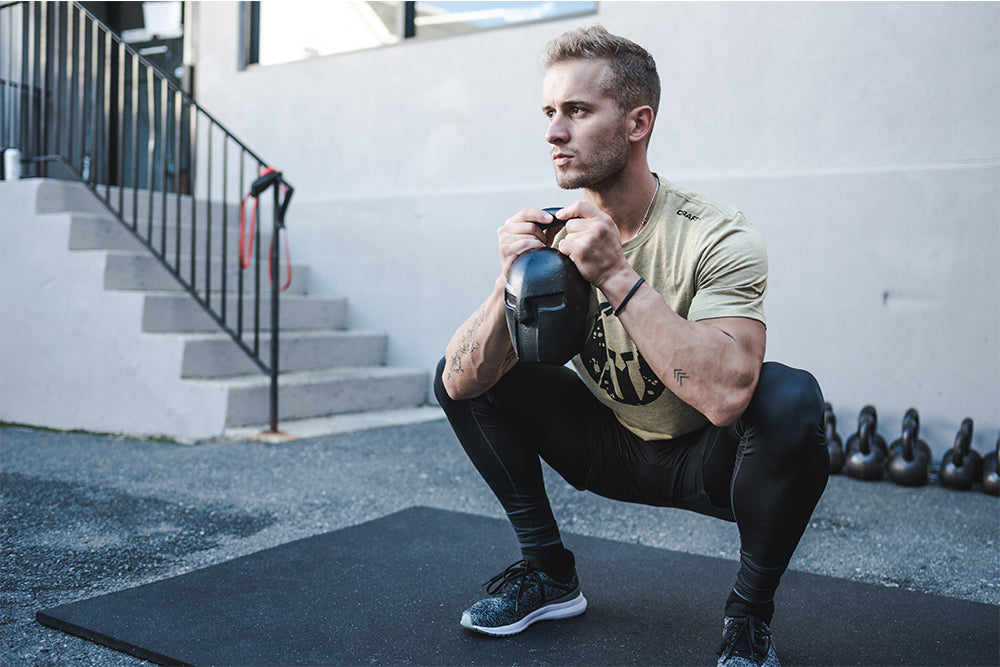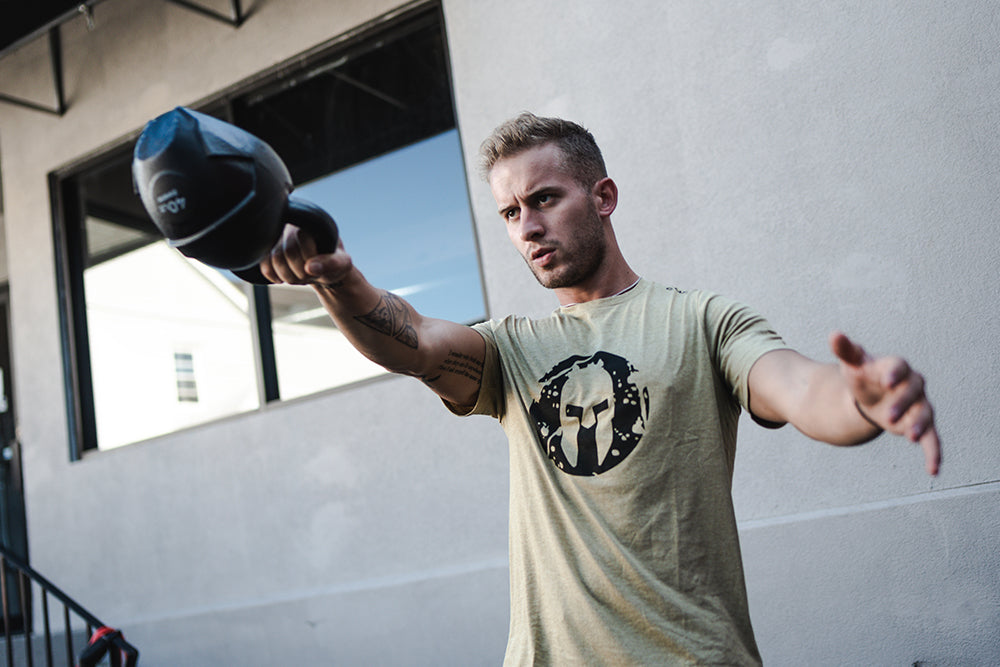Do This Differently: Workout Hacks to Master the Kettlebell Swing

Spartans don’t switch things up for the sake of change. They do things differently with intention. That’s what this series is all about. In this Spartan Fit franchise, we’ll share ways to purposefully adjust or modify certain aspects of your training to optimize performance. Next up: the kettlebell swing.
The kettlebell swing is the ultimate power move — mastering this exercise helps you to explode over walls and excel up inclined terrain. “You are literally swinging and controlling a cannonball, which requires strength, athleticism, and motor skills,” says Sam Stauffer, Spartan’s Director of Training, noting that it’s essentially a “ballistic deadlift.” But that’s not all: “Its benefits include increased hip and core strength and function, too.”
But, to make a kettlebell flow look as effortless as the pros do, you’ll first need to build a solid base of strength, and master the fundamentals of the swing.
Simple though the move may look, it's not easy for beginners, per Stauffer. That’s why he includes a kettlebell deadlift in the list below. “It’s the starting position of any swing variation and must be mastered before advancing to the swing,” says Stauffer. Once you’ve got that down, you can move on to the hike swing, followed by the traditional swing, and then get serious with some spin-offs.
“Throughout the week, I like to have a healthy mix of single-arm and double-arm swings,” Stauffer says. “For more advanced folks, adding the swing or hard snatch is great too.”
Here are a few kettlebell-swing hacks to improve your form, prevent injury, and better your results overall, from beginner tips to advanced options.
Related: Do This Differently: Intelligent Warm Ups to Optimize Specific Workouts
Pro Tips to Master the Kettlebell Swing Like a Spartan Champ

If You've Never Done a Swing: Kettlebell Deadlift
“Learning how to hinge your hips while engaging your shoulders, core, and back is crucial,” says Stauffer, noting that the kettlebell deadlift does exactly that.
Pro tip: If these three standards are met consistently, it's time to begin swinging:
- Hinge at your hips without the knees jutting forward (which would be more like a squat).
- Keep your back flat without rounding your spine or shoulders throughout the movement.
- Don’t hyperextend your lower lumbar at the reset or standing position. (Your core should be braced and your back should remain aligned over knees and hips when you stand.)
If You Need to Sharpen Up Your Initiation of the Swing: Hike Swing
“Starting with, and mastering, the hike swing is a great transition before diving headfirst into the swing,” Stauffer says. “This movement will teach you how to appropriately start and end a kettlebell swing (a lot of unnecessary injuries occur during the picking up and putting down phase). This move will also teach you how to create and control momentum.”
Pro tip: This is like a deconstructed swing. With the bell on the ground about a foot in front of you and your legs wider than hip-width, grasp the horn, then hike it back through your legs. With control, bring it back to the starting position. Repeat.
If You’re Ready to Start Swinging: Russian Swing
“Incorporating the hike swing mechanics with the actual free-flowing swing is the ultimate test of athleticism and control,” Stauffer says. “In the American swing, you bring the kettlebell high up past your head while the traditional Russian swing is all about force and control,” Stauffer says. “Between the two, I will always choose the traditional Russian swing as it encourages proper mechanics and form.” Check out how to execute the Russian swing with perfect form.
Pro tip: Don’t make these all-too-common mistakes:
- Lifting the bell with the arms to create the swing motion
- Squatting with the bell on the downward part of the swing rather than hinging at the hips
- Rounding the upper and lower back
- Letting the shoulders cave in
If You Want to Work Your Core Even More: Single-Arm Swing
The set-up is no different than the Russian swing, only now it’s one-sided. “With just one arm controlling the bell, you'll engage your core on a higher level,” Stauffer says.
Pro tip: Internally rotate your shoulder on the downward part of the swing. “It will put the bell in a better position between your legs and act as a catapult once you drive your hips forward,” says Stauffer.
Related: Spartans on Science: The Post-Quarantine Training Guide to Prevent Injury

If You Want to Bullet-Proof Your Shoulders: Single-Arm Swing Snatch
“There's nothing more athletic than being able to perform this move well,” says Stauffer. “That said, it's not for everybody and you need to be hyper-aware of your shoulder health before attempting to learn this super-advanced move.” Check out how to execute the single-arm swing snatch with perfect form.
Pro tip: “You need to know how to roll the kettlebell around the wrist smoothly or else you'll end up with quite a large bruise on your wrist,” Stauffer says. The entire movement should look seamless. “The bell should create a little more than half a perfect circle without stopping until you are racked at the top.”
If You Want to Build Power, Power, and More Power: Hard-Style Snatch
“The hard-style snatch is better performed with a dumbbell and can teach you how to generate power without momentum,” Stauffer says. “This is a progression from a swing snatch even though the swing snatch looks harder.”
Pro tip: Start with the kettlebell or dumbbell in front of your hips. Hinge your hips back while driving the weight through your legs. Then, in one powerful motion, drive your hips forward, bringing the weight up the body to a racked position overhead. Do all reps on that side, then repeat on the other. “It should look nearly identical to a hang clean,” Stauffer says.




















